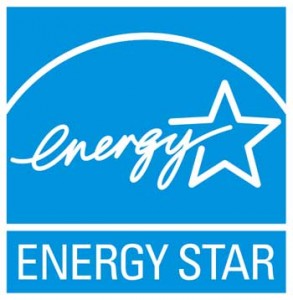Windows are one of the best ways to add both beauty and value to your home. They offer curb appeal from the outside and provide natural lighting and views of your surroundings from the inside. But in addition to aesthetics, windows also provide security, sound proofing, and a critical element of insulation to your home.Heat is attracted to cold, so during the winter months, the heat circulating through your home looks for ways to flow outside, and in the summer, it flows indoors. Of course, the easiest source for heat to flow toward the cold is through the windows in your home. Without proper insulation year-round, you will find that your energy bills tend to skyrocket as your thermostat struggles to maintain a comfortable level. As the cost of energy continues to rise, more and more homeowners are turning to replacement windows as an effective way of insulating their homes.
What is Energy Star?
If you've started browsing for new replacement windows, it's likely that you've noticed the Energy Star label. So what separates Energy Star windows from other windows on the market? The Energy Star program itself is a joint effort between the EPA and the United States Department of Energy. Energy Star products are designed to help protect both the environment as well as our wallets through energy efficiency. When most people hear the term Energy Star, they think of appliances. But the Energy Star certification does apply to windows as well. In order to earn Energy Star certification, windows are independently tested by the National Fenestration Rating Council (NFRC) and labeled according to climate zone. Homes in Pittsburgh fall in the Northern zone, and to meet Energy Star criteria, windows in this zone must offer special insulation to protect against the cold during harsh Pittsburgh winters.
The Bare MinimumIf you're in the market for new replacement windows, most of the ones you're considering will be Energy Star-qualified. In fact, Energy Star should be the bare minimum in energy efficiency that you are considering for your replacement windows. Some window companies, like Legacy, offer windows that exceed Energy Star criteria. If you are looking to looking to maximize your home's efficiency, then you should be looking for a product that exceeds Energy Star.
National Fenestration Rating CouncilThis is where the NFRC comes in. Each replacement window you view should have a label from the NFRC, similar to the one below. The NFRC rating system focuses on five factors that affect a window's performance: U-factor, solar heat gain coefficient, visible transmittance, air leakage, and condensation resistance.
Moral of the story? While understanding the Energy Star program and looking for the Energy Star label on windows is important, it is only the first step in making an informed replacement window purchase. To truly maximize your home's efficiency, go beyond the Energy Star label and do your research.
Subscribe to Legacy Remodeling's Blog











Comments